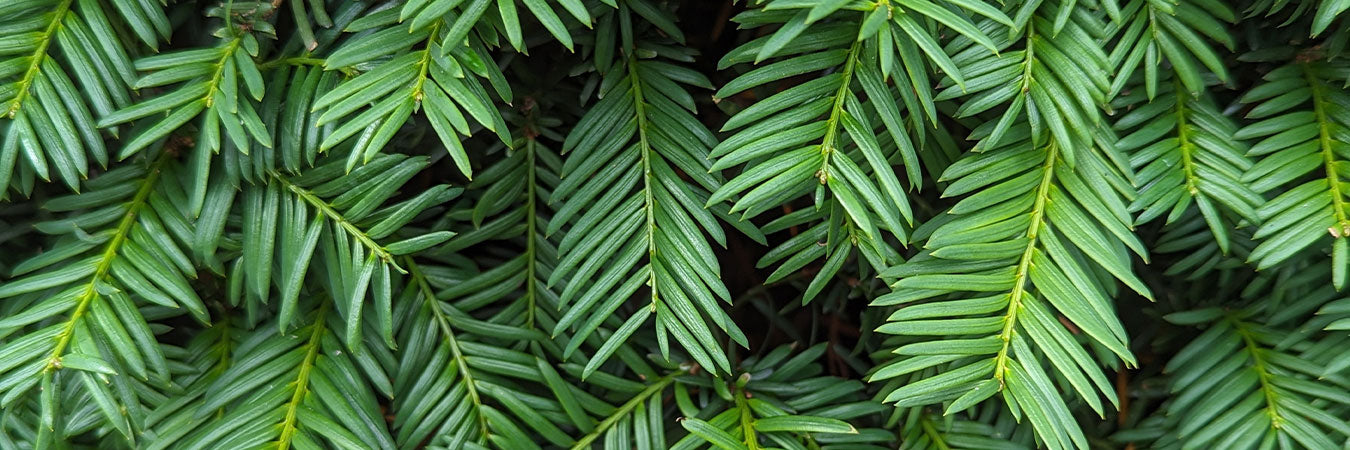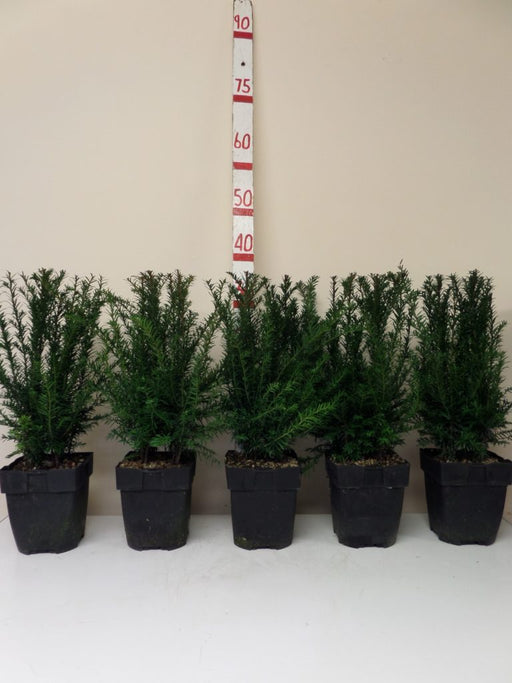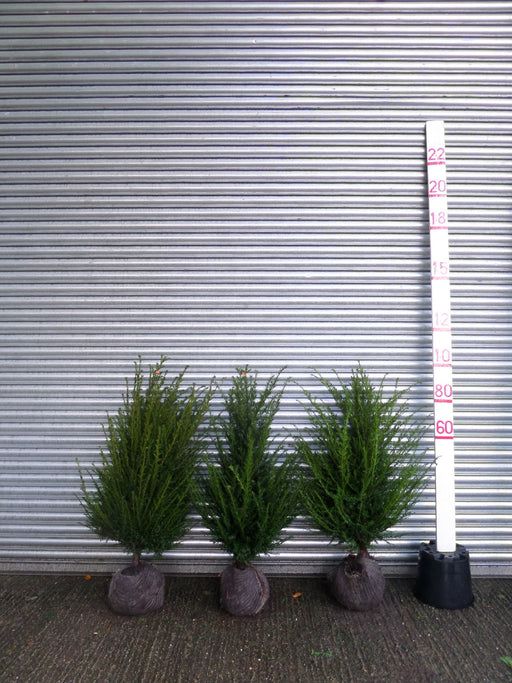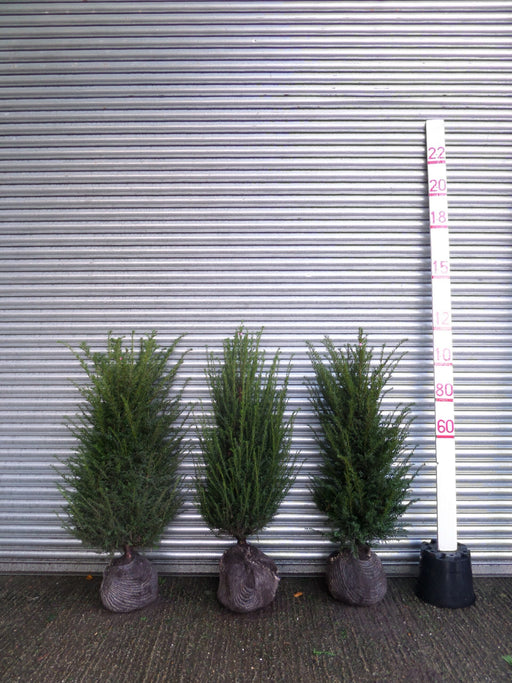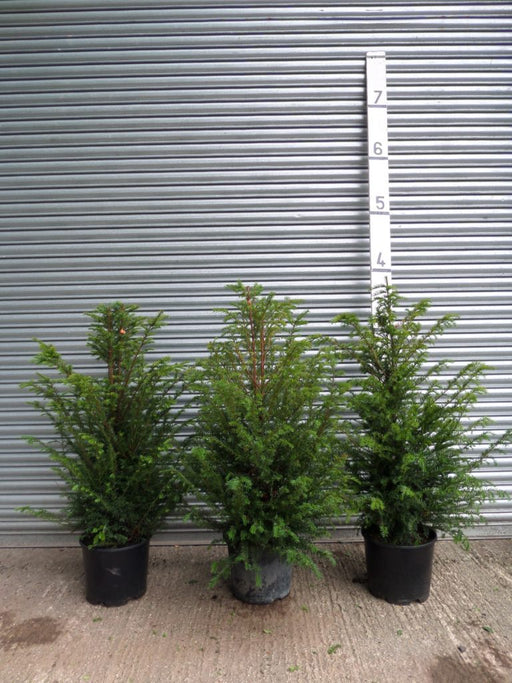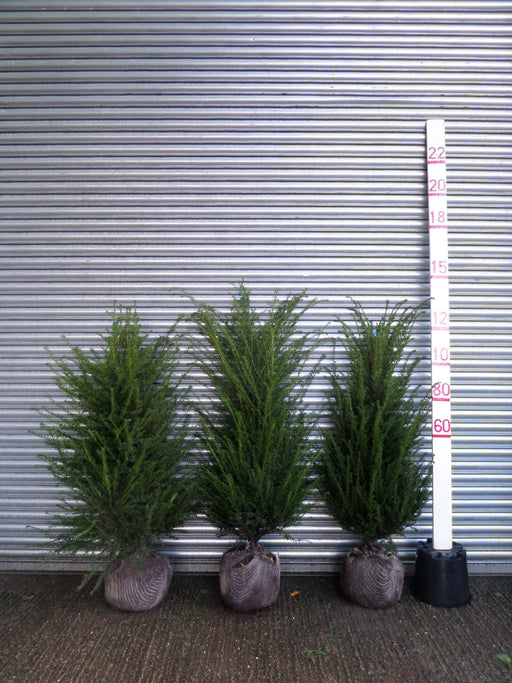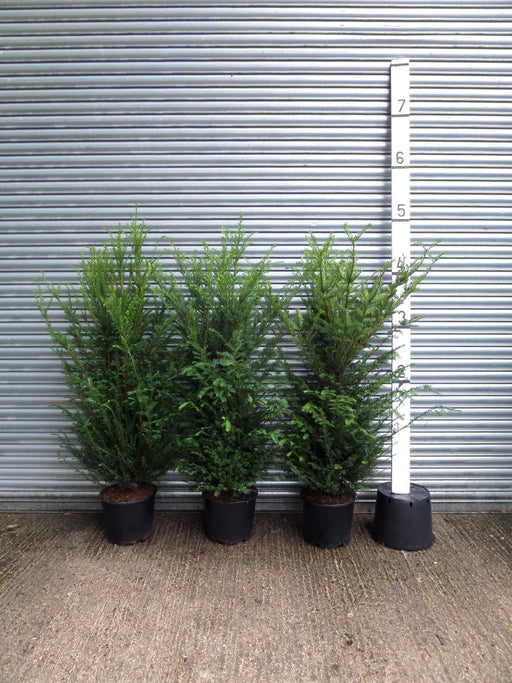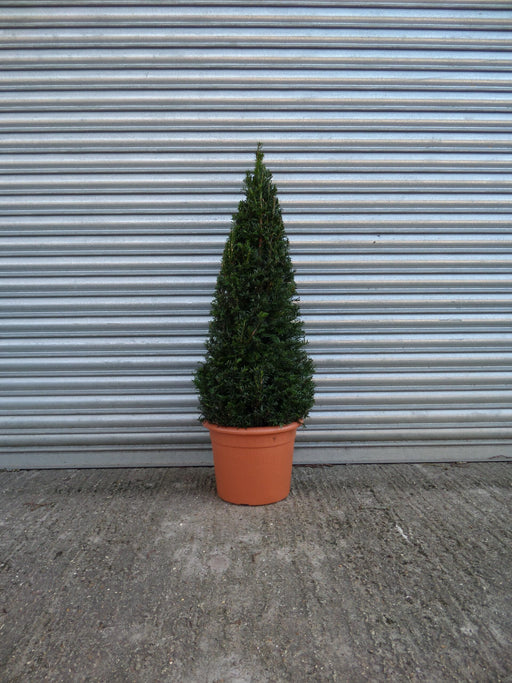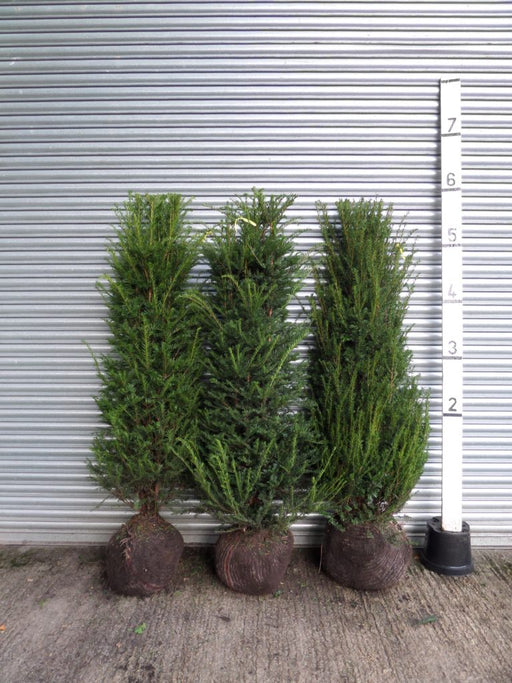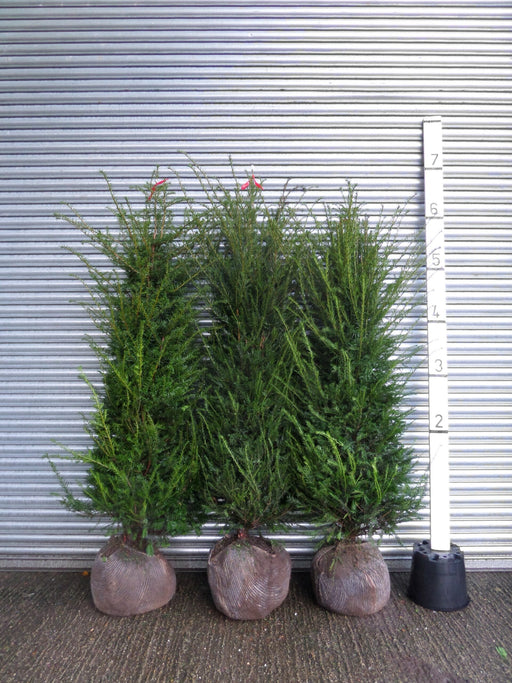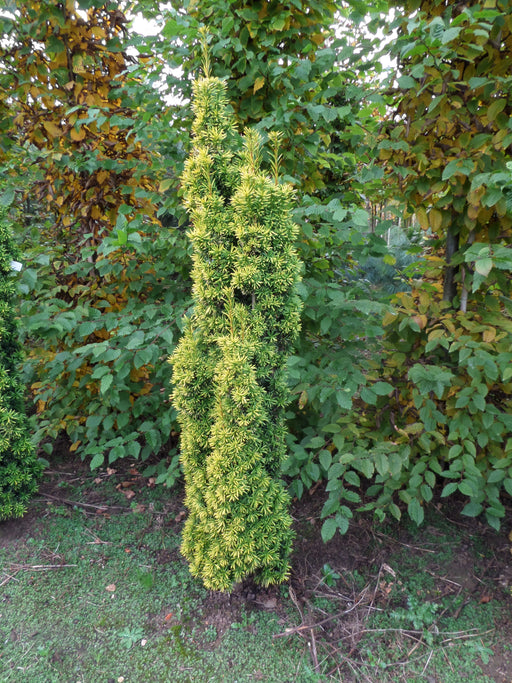Slow Growing Hedge Plants for Formal Hedging & Topiary
Yew (Taxus Baccata), also known as English Yew or Common Yew, has been a popular hedging plant for many centuries, and is still highly sought after to this day. Yew is a native evergreen conifer to the UK, and you will find many ancient specimens of Yew in almost all churchyards, which are often hundreds of years old. Yew has a slow growth rate and clips well to form a dense hedge with dark evergreen foliage, often used to create formal hedging and topiary. English Yew Hedging is a common hedge plant used in many formal gardens as it is considered quintessentially English, plus its slow growth means it keeps its smart shape after clipping.
Looking for something in particular?
We stock a selection of different sizes of Yew throughout the year. In the colder months (beginning in the Autumn) we supply a large range of root-balled Yew, particularly larger sizes, which can be a more cost-effective way of planting a large Yew hedge. Learn more about the differences between bare roots, root ball plants and container grown hedging.
For more information on our availability of Yew or if you have any questions or queries about existing Yew hedges or need advice about planting a new Yew hedge, please call us on 01252 714552 or email sales@hedgesonline.com.
Yew Hedging: Frequently Asked Questions
How tall will Yew grow?
A Yew hedge can quite happily be grown as a short hedge of around 2ft in height but will be equally happy grown as a taller hedge with a height of 10ft or more. Although it is slow growing, a single Yew can be grown into a tree and will grow to a good height if left for long enough. Yew can also be cut back hard and will regenerate which makes it useful for those trying to restore older hedges.
How quickly will a Yew hedge grow?
Yew hedge plants are slow growing, with the average growth rate of an English yew around 6-9 inches of growth each year if left untrimmed. Once the hedge has reached its desired height it should be trimmed at that height accordingly to maintain its size and increase its density. This will slow down the upward growth of your hedge and encourage growth sideways to make a denser hedge. If you are looking for fast-growing instant hedging plants, then Yew is probably not the answer unless you are prepared to buy extremely large plants. However, Yew does make an excellent hedge if a little bit of patience is exercised.
Read more about how to grow a hedge quickly.
How are Yew hedging plants sold?
Yew is a versatile hedge and is sold in different forms for planting at various times of the year. Root ball hedging is typically planted between autumn (usually October) and spring. Although some online retailers will sell bare root Yew plants, we do not offer them as they typically have a high rate of failure unless looked after very carefully and precisely, so we only offer rootballed and pot-grown plants. Pot-grown plants are available to buy year-round, ensuring convenience throughout the year.
When should I cut, prune or trim a Yew hedge?
A Yew hedge will need to be clipped annually in the Spring or Autumn as you would with any other hedge. Learn trimming techniques from the experts.
How far apart should I plant a Yew hedge?
As a rule of thumb, for larger hedges, Yew should be planted 2ft (60cm) apart regardless of how tall or short they are when you buy them and careful preparation of the planting site is important. If you are planning on planting a very low hedge (30-60cm) in height, then you can plant much closer.
How do I look after my Yew hedge after planting?
Although Yew plants will put up with most soil types, we recommended that the planting soil is mixed with compost to give the plants the best environment to grow in for their first year. After planting Yew, your Yew hedge should be watered regularly during its first year to give it the best chance of survival and this is especially important if your hedge is being planted in the drier summer months. That being said, Yew does not like waterlogged soils so over-watering can be a problem.
Learn more about how to look after your hedge properly.
How do I water my Yew hedge?
Watering a Yew hedge is especially important if you are planting during the summer or a dry period. For watering, we recommend using leaky hose (sometimes described as a porous pipe) which can be connected to your existing hose pipe and will slowly leak water onto the roots of your hedge in a controlled manner to ensure that it soaks in and your hedge becomes properly watered. Leaky hose is cheap, easy to install and very effective. Watering Yew hedges can be difficult as they are highly susceptible to both overwatering and underwatering and the symptoms of both can look very similar. How much water a yew hedge needs will very much depend on the soil type and conditions and should be carried out with due care. If you are planting on heavy clay soil, do not plant Yew as the ground will sit too wet for them over the winter.
Is Yew tolerant of different soil types?
Yew will tolerate most soil types (including dry sites) but do not like being in waterlogged soil. If you have a wet site, speak to us for alternative suggestions for waterlogged soil.
Do Yew hedging plants like full sun or shade?
Yew will grow well in full sunshine or shade making them extremely versatile.

